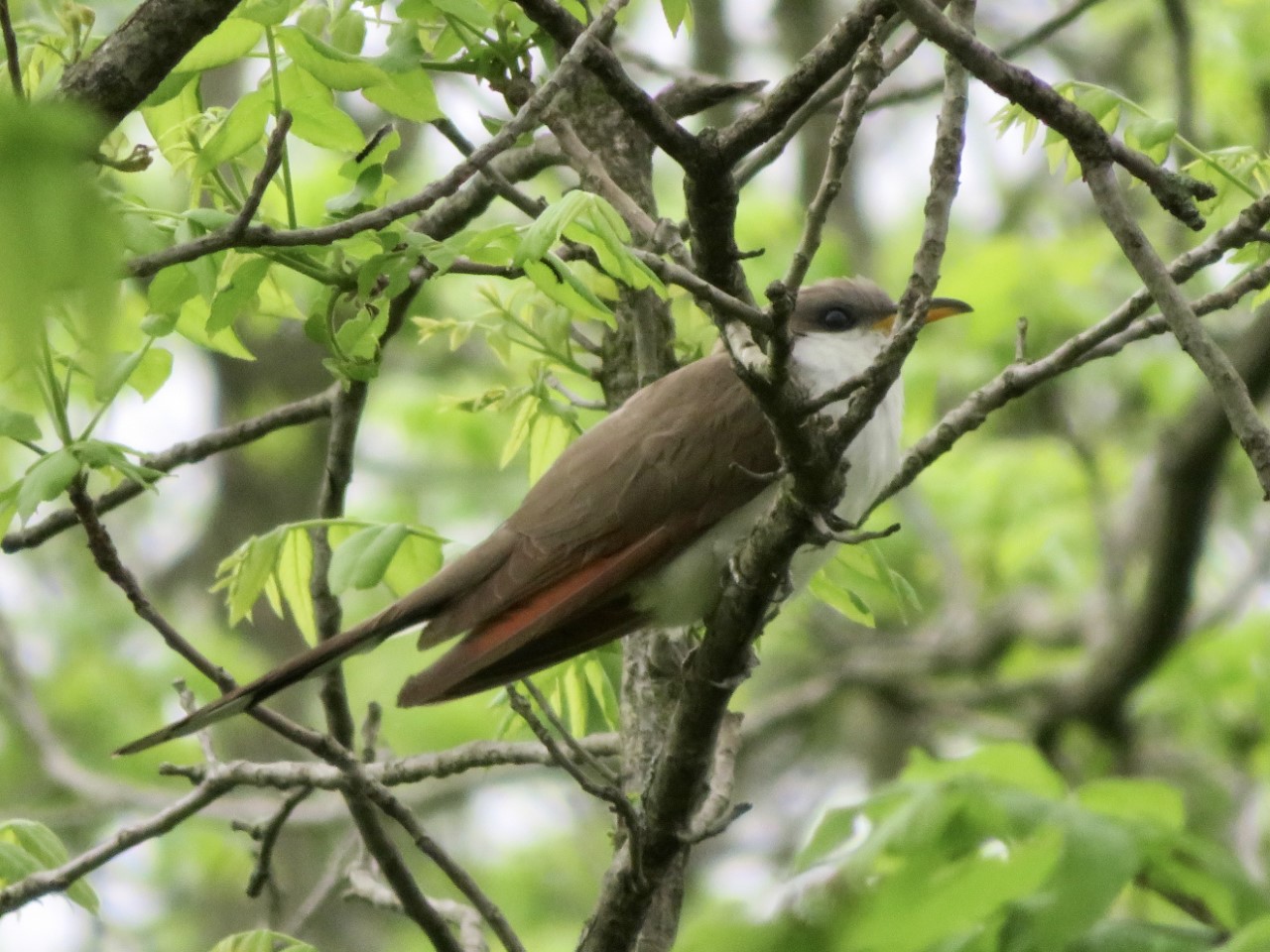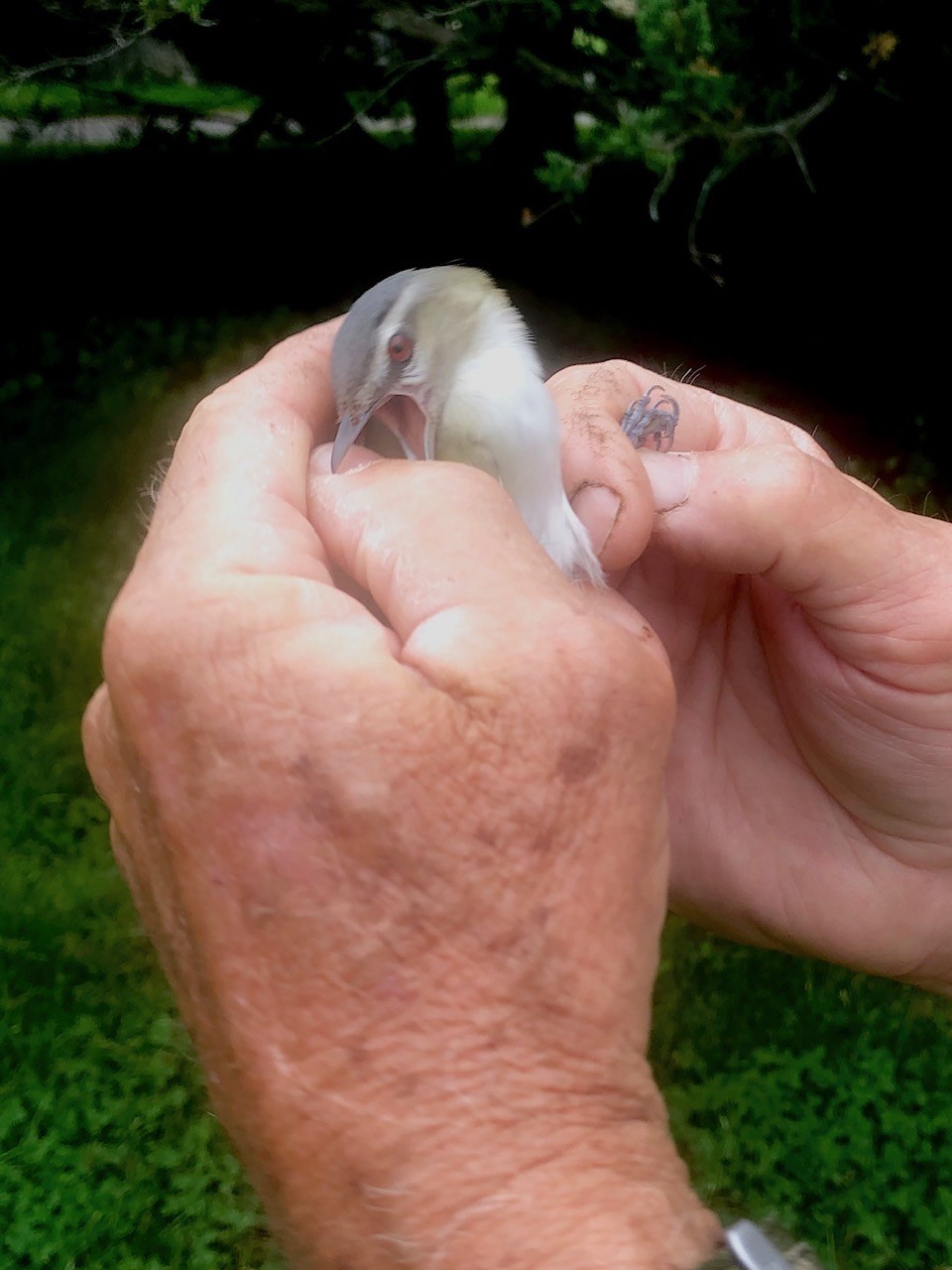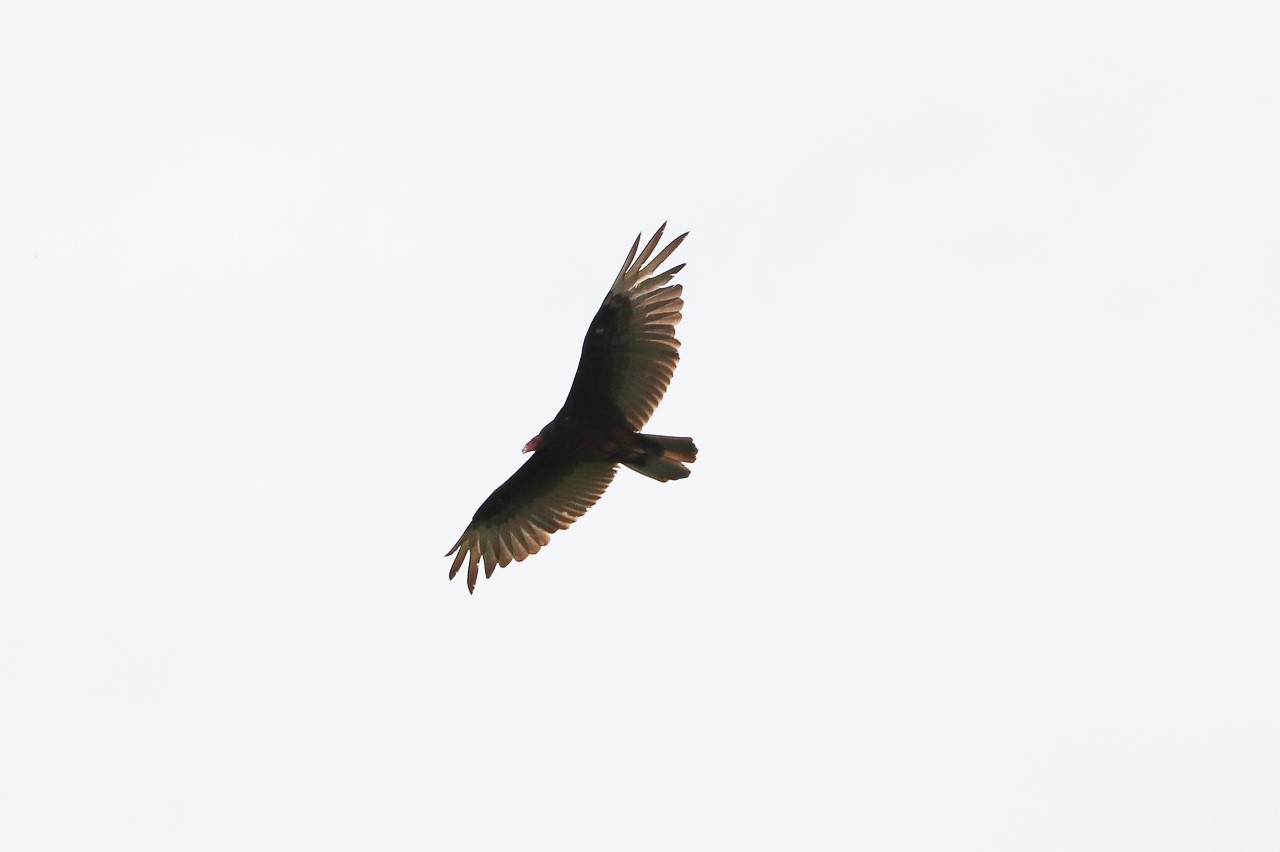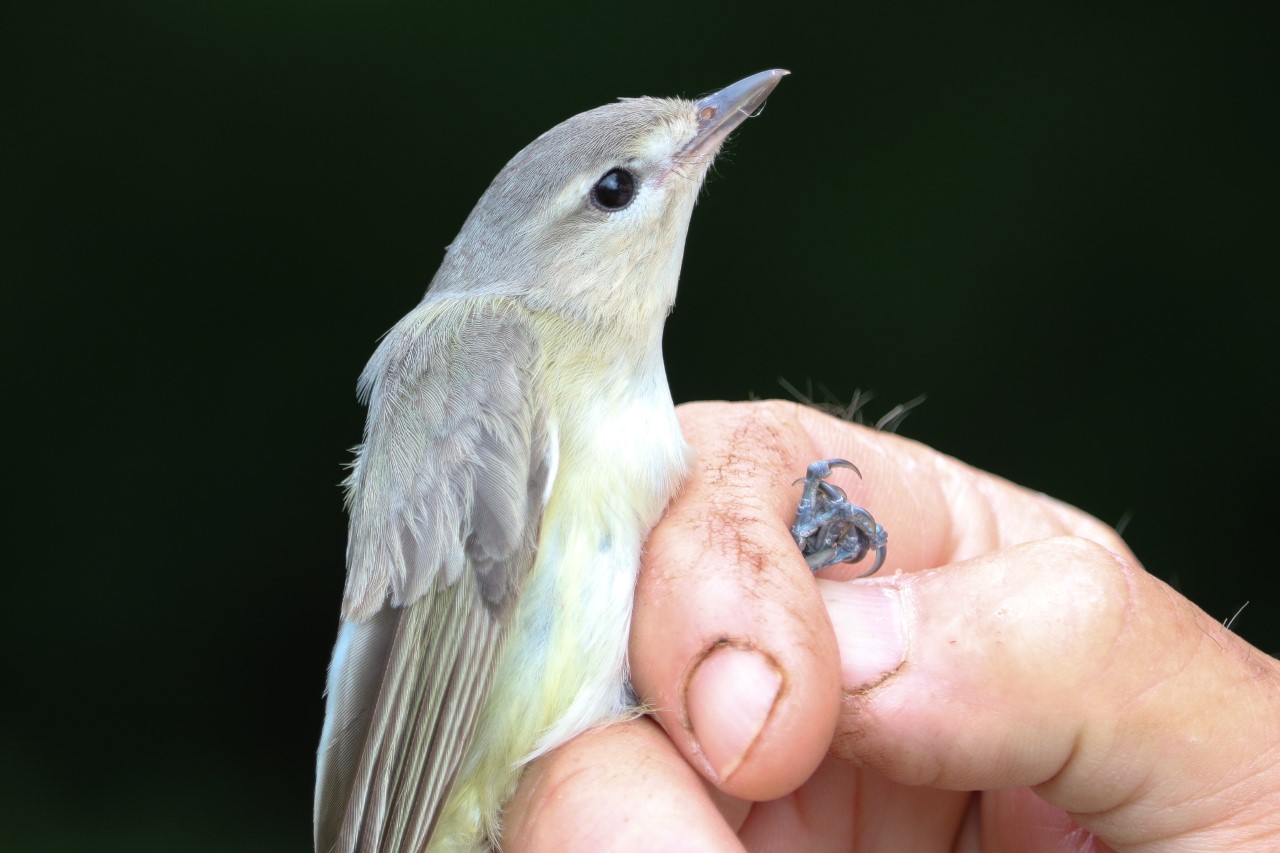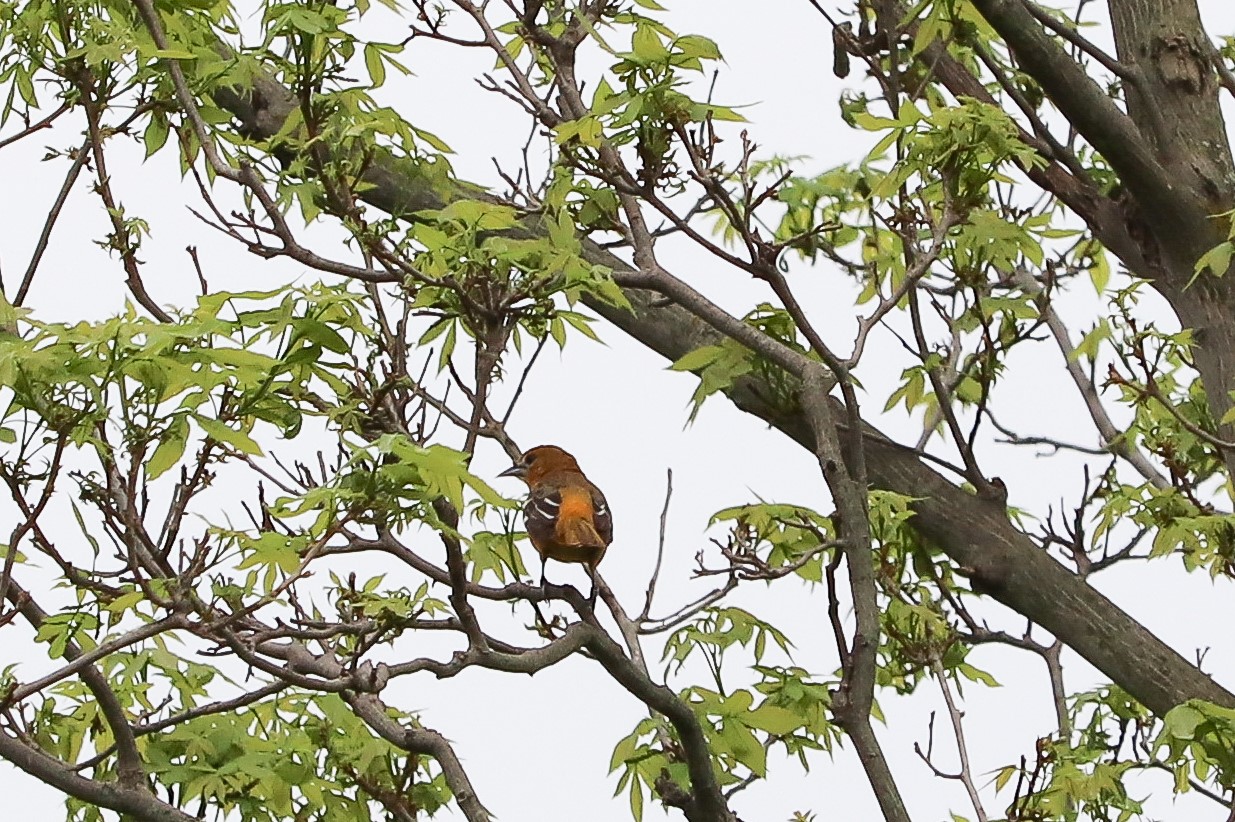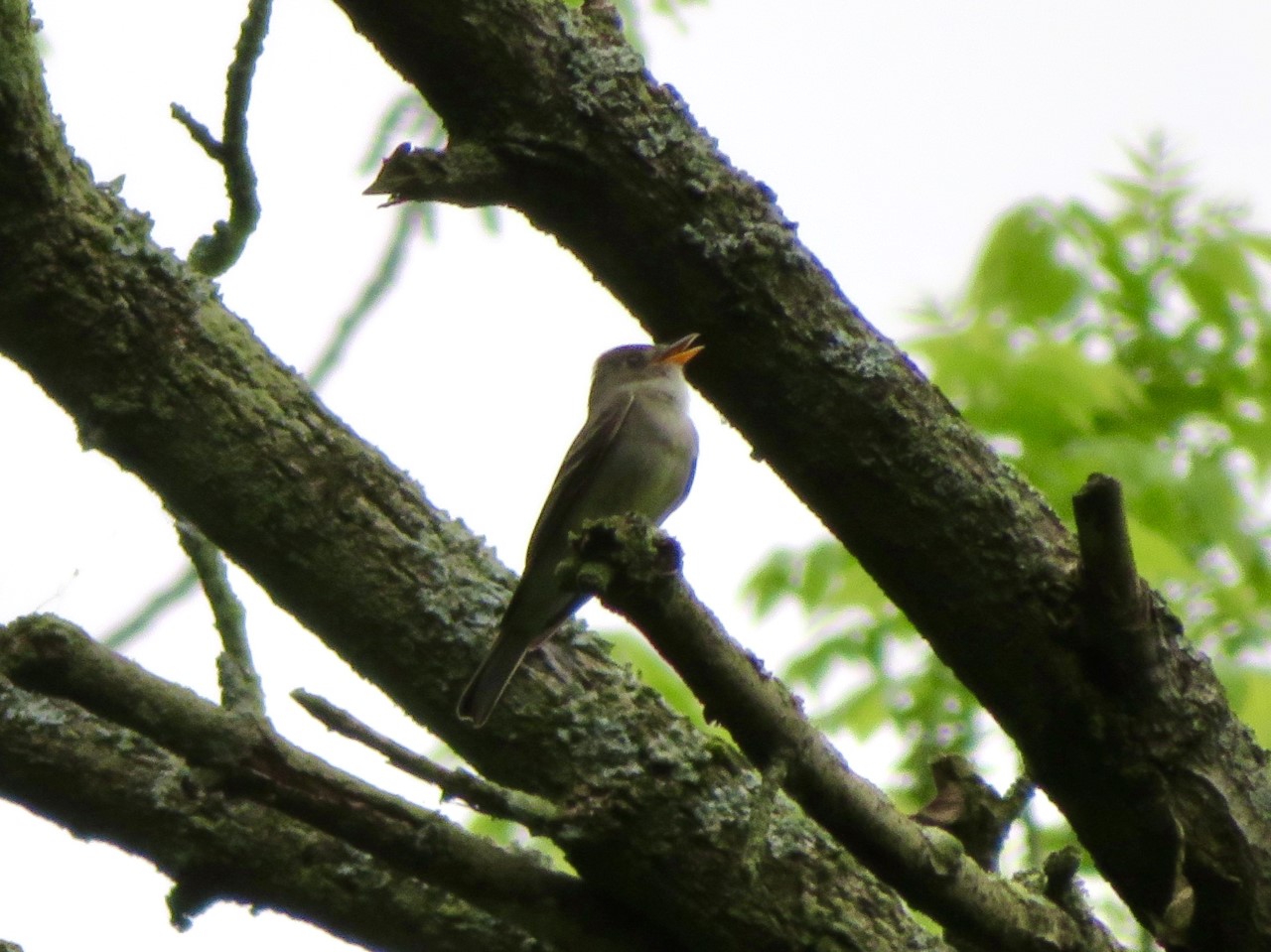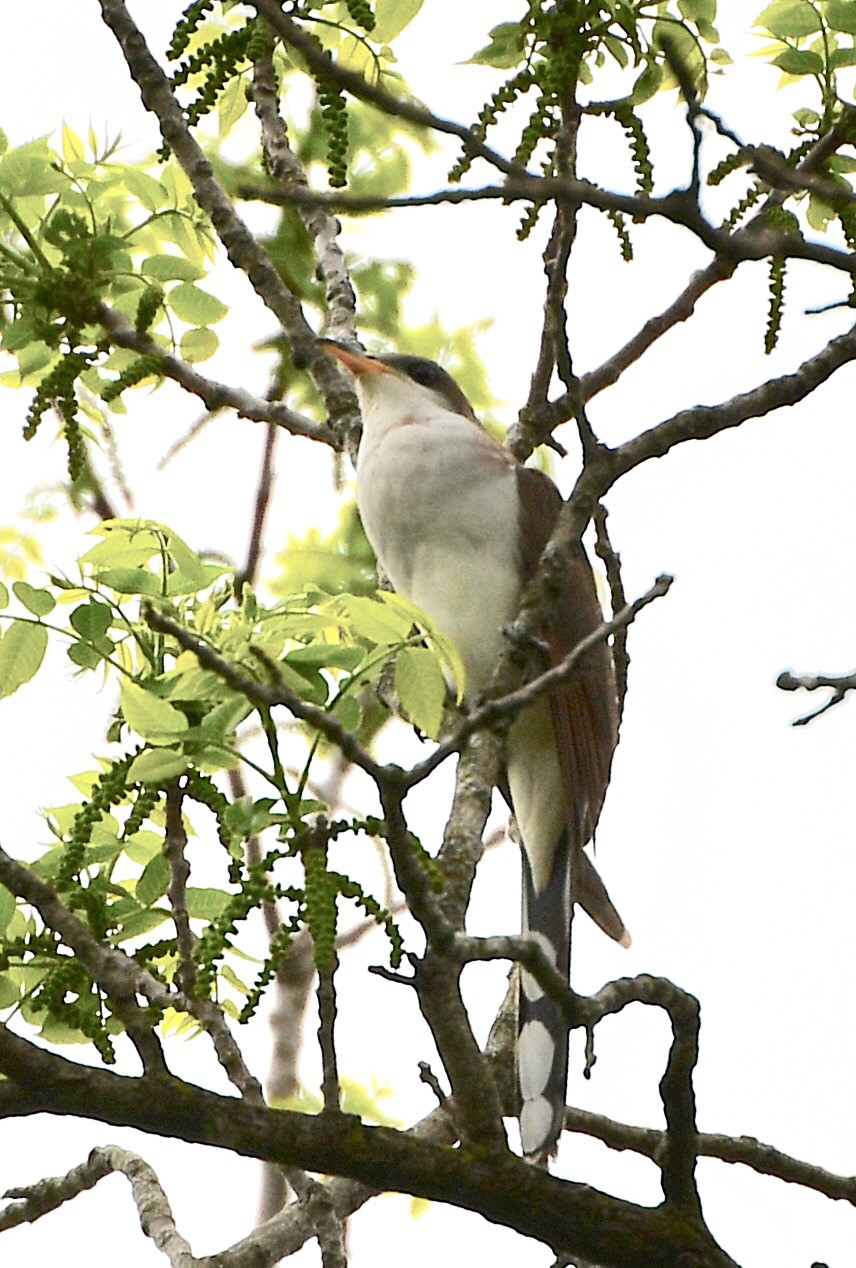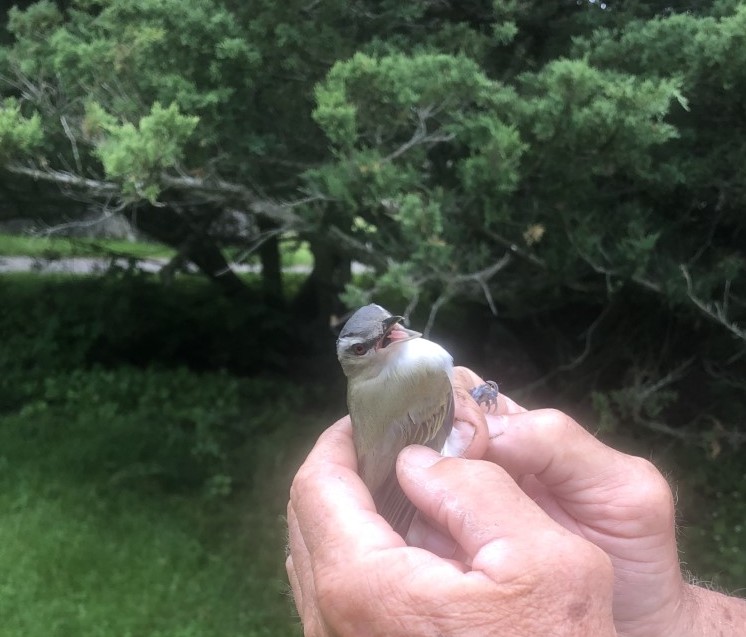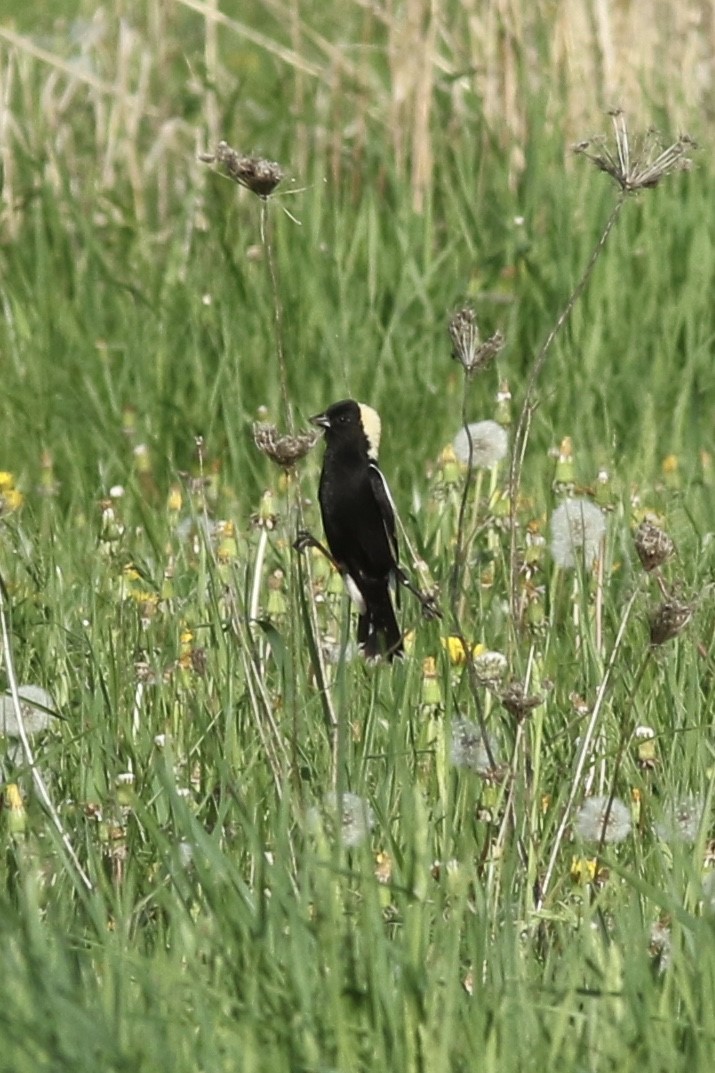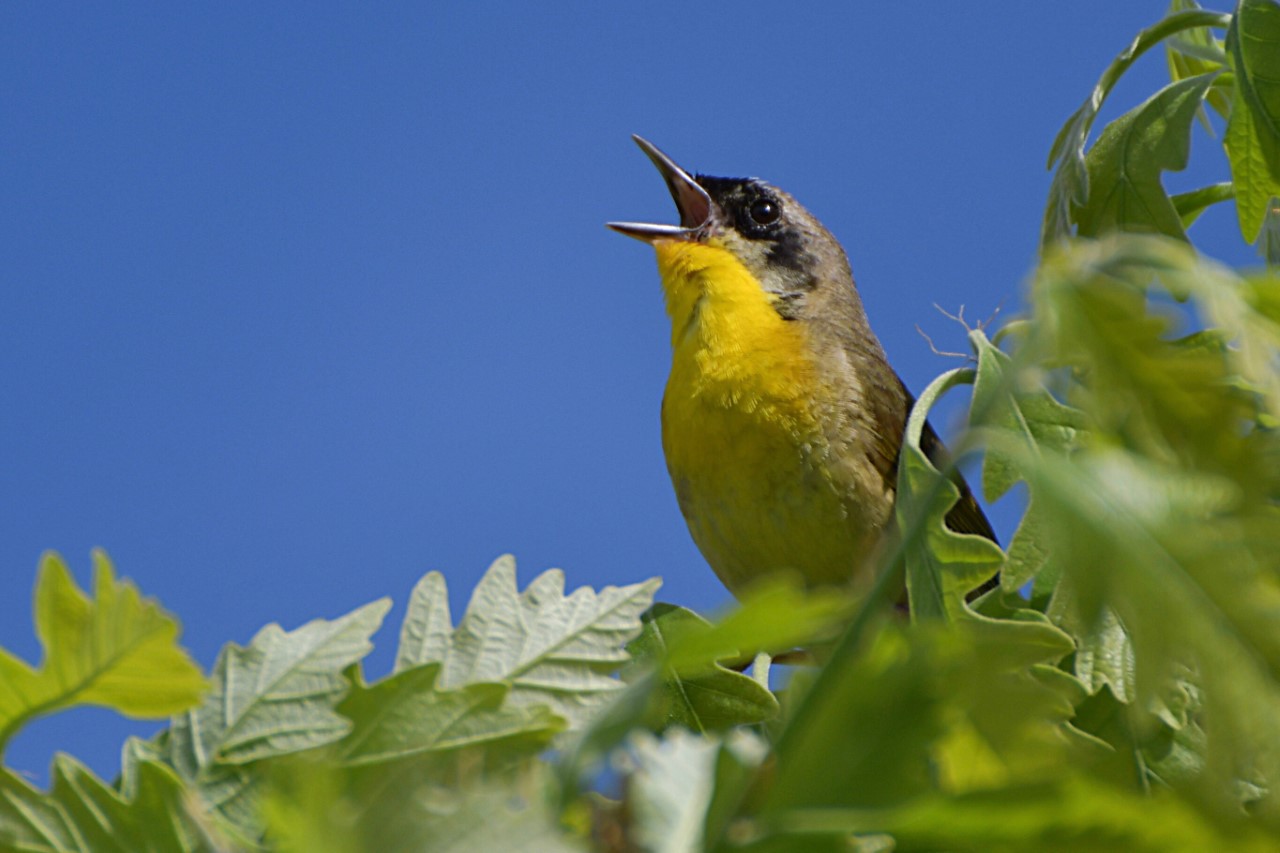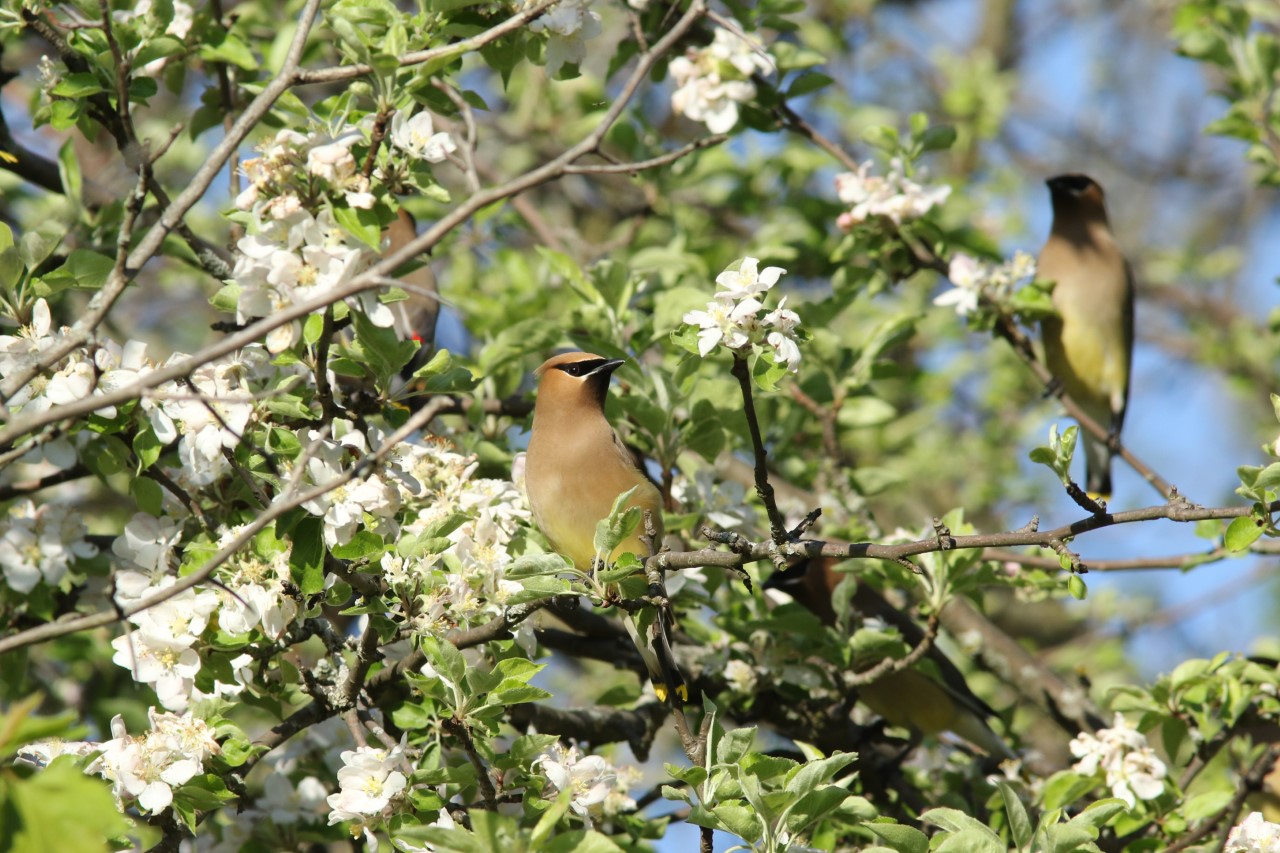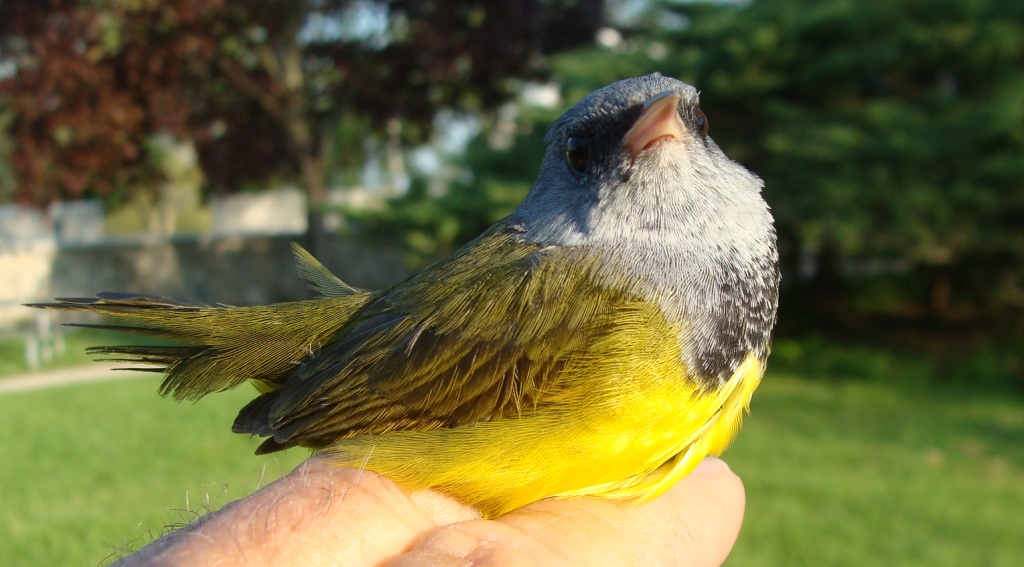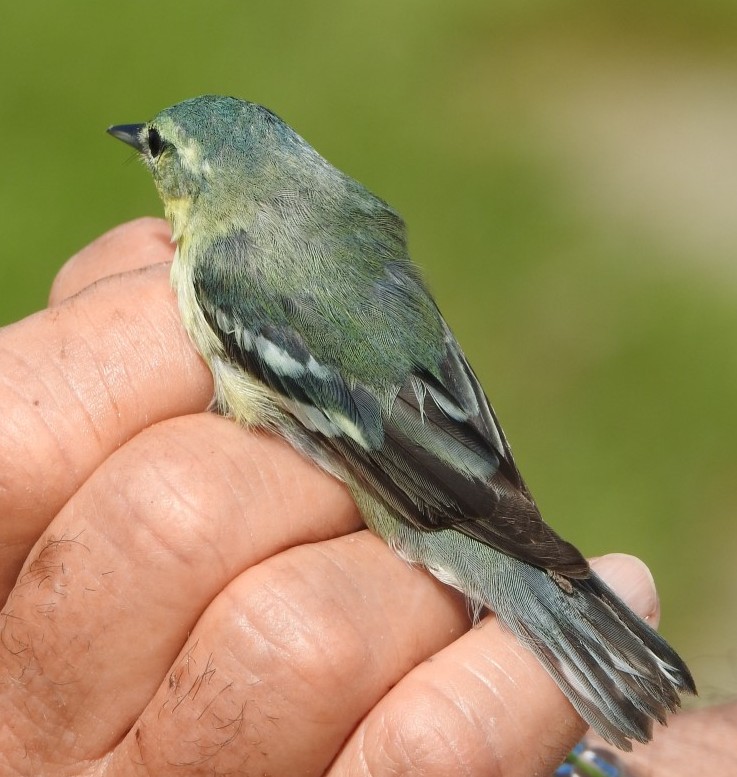Is the migration over? They say nothing’s over till the fat lady sings…. She wasn’t singing today but you could hear her humming in the background. Almost all the migrants that breed further north have passed through and the migrants that intended to nest here are…here and well into nest building and about to lay eggs (if they haven’t already started).
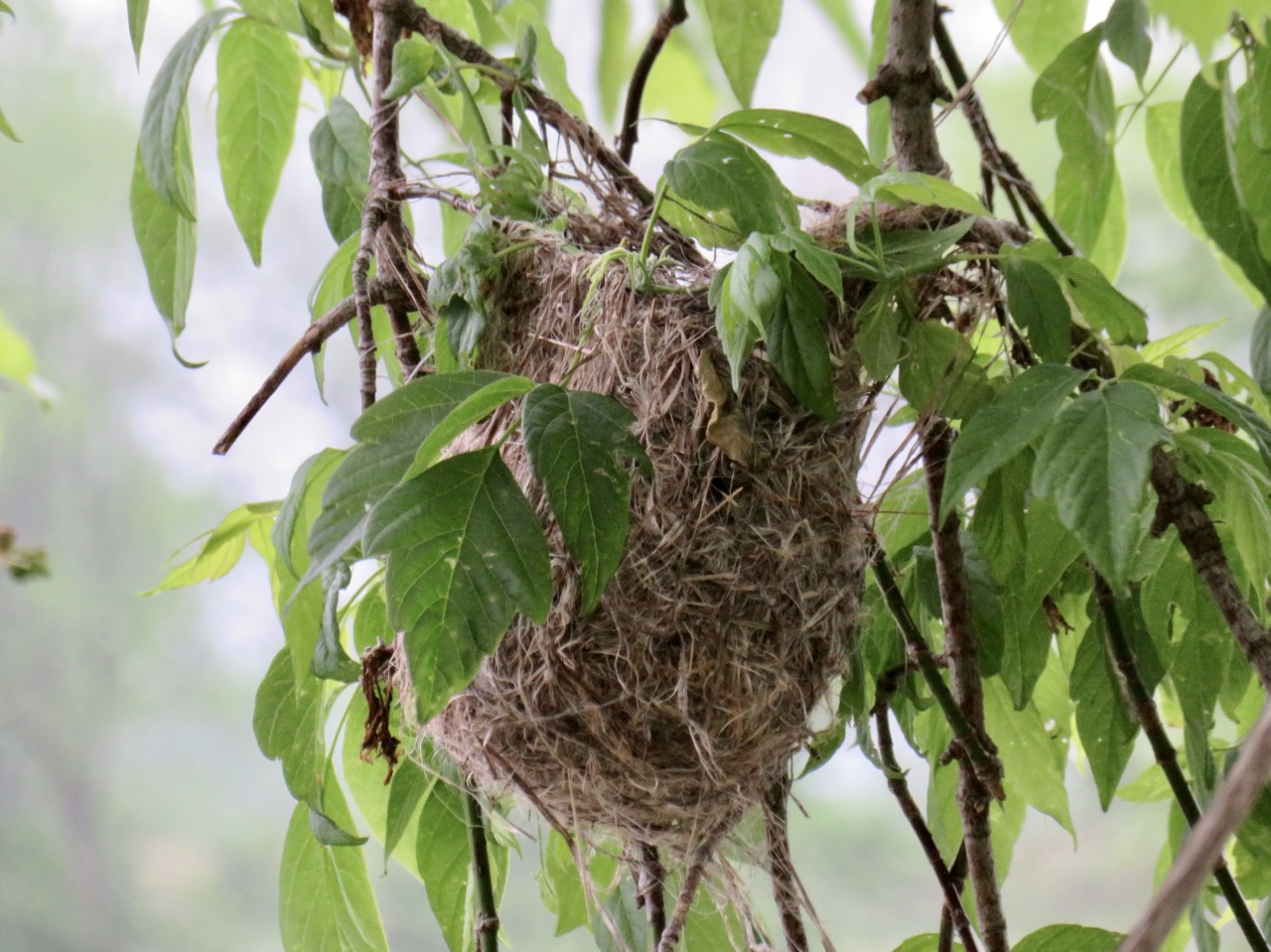
The Baltimore Orioles didn’t waste any time on their return but got right into the business of reproducing. This brand new nest is ready to go. -KMP
As is usual at this time of year, the banding numbers have dropped off and the species variety has declined (although we’re still catching some neat birds and our species count today was a respectable 61).
As I mentioned a couple of days ago, the Killdeer eggs hatched and the parents spent a couple of days ushering the four chicks around the parking lot. Yesterday morning I watched as the parents began to move them down to the river – a time fraught with danger and anxiety (the latter for me especially). In the past the adults have (wisely to my way of thinking) lead them via the meadow trails and then the banding lanes at Net 8 and the owl lanes to the river. This year they chose a curious route: through the long grasses and shrubs between nets 4 and 4C down to the stream, Rick’s Rill. I think they would follow the stream down to the Grand. This is NOT a good route as they would be very visible to the many predators along the way: racoons, mink, raptors, crows, jays. Also, the stream is not clear-flowing – it is often blocked by tree debris. So this morning when two adult Killdeer returned to the parking lot I wondered if these were the parents about to try again….

Two Killdeer returned to the parking lot this morning. Are they “new” or does this signal that their young ones didn’t survive the journey to the river? -RD
On a more positive note, the Purple Martin colony seems to be catching on. We counted 19 birds there just the other day and there were at least 16 this morning. They are building nests. This is interesting in itself: the birds fly SW from the colony and then return some time later from that direction carrying nesting material. I would love to know where (and how far) they’re going to get this.

After some very anxious moments in the cold days of April and early May when we wondered if the Purple Martin colony would return, it is gratifying to count somewhere between 16 and 20 individuals now most of which are busy gathering nesting material. -HV
We were able to confirm the presence of both cuckoo species at Ruthven this morning:
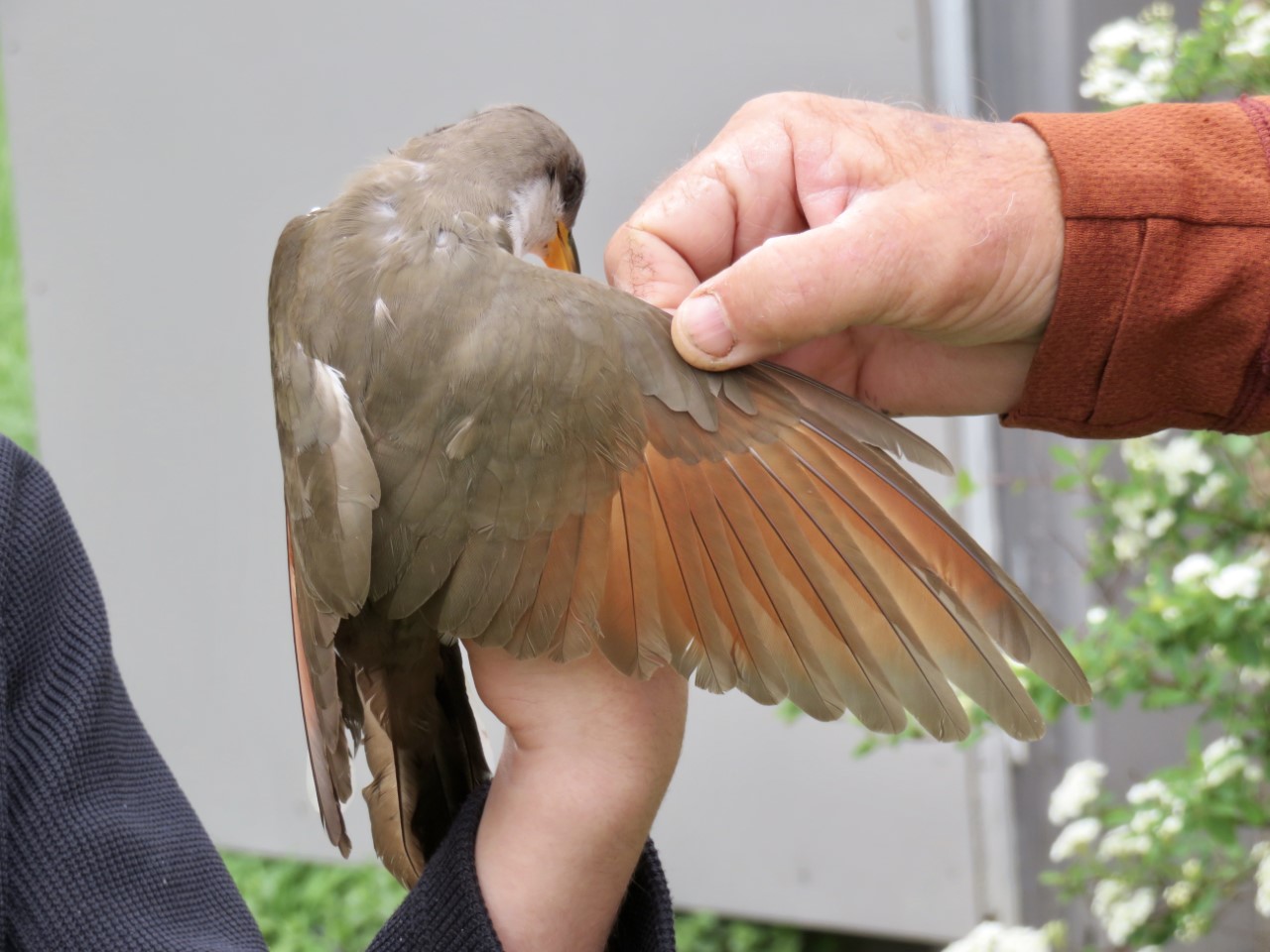
The Yellow-billed Cuckoo’s reddish wing panel can be seen as a good distance and is a great distinguishing mark. -KMP
Banded 25:
1 Yellow-billed Cuckoo
2 Yellow-bellied Flycatchers
2 Traill’s Flycatchers
1 Great Crested Flycatcher
1 House Wren
3 Gray Catbirds
8 Cedar Waxwings

Cedar Waxwings have returned en masse in just the last several days. Our count of 50 today was quite likely too low. -KMP
2 Red-eyed Vireos
1 American Redstart
1 Indigo Bunting
1 Song Sparrow
1 Lincoln’s Sparrow
1 American Goldfinch
ET’s: 61 spp.
Other Photos:
Rick


